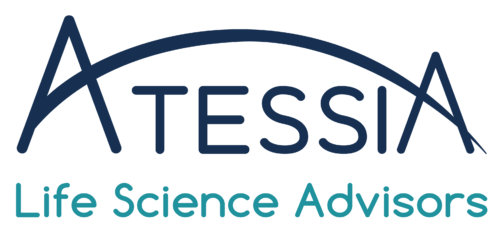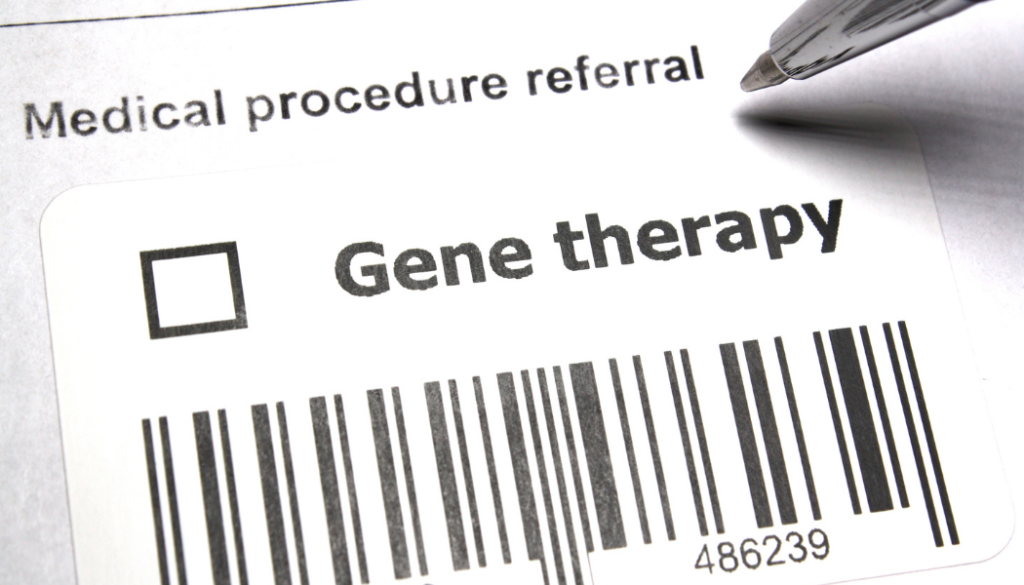The regulatory requirements for the pharmaceutical development of gene therapy medicinal product are described in Annex I, part IV of Directive 2001/83/EC applied to advanced therapy medicinal products. The following definition is included:
“Gene therapy medicinal product means a biological medicinal product which has the following characteristics:
a) it contains an active substance which contains or consists of a recombinant nucleic acid used in or administered to human beings with a view to regulating, repairing, replacing, adding or deleting a genetic sequence;
b) its therapeutic, prophylactic or diagnostic effect relates directly to the recombinant nucleic acid sequence it contains, or to the product of genetic expression of this sequence.”
Both of these two conditions must be met so the product can be classified as a gene therapy medicinal product.
According to Regulation (EC) No 1394/2007, gene therapy medicinal products must be regulatory approved under an European centralised procedure, like all other advanced therapy medicinal products (ATMPs).
This procedure includes an in-depth evaluation of the marketing authorisation application file submitted by the pharmaceutical company, which is carried out by the EMA and involves various specific committees and working groups that provide recommendations. The EMA website provides procedural and guidance documents to help companies applying for a marketing authorisation for ATMPs.
In the following paragraph we discuss the main elements of the registration procedure for a gene therapy medicinal product.
As with “conventional” medicinal products, the marketing authorisation dossier is based on three main aspects: the quality, safety and efficacy of the medicinal product, in order to determine its benefit/risk ratio. The eCTD dossier is composed of five modules to which certain technical adaptations are added.
In particular, if the product is a gene therapy medicinal product containing genetically modified organism (GMO), Module 1 must also include an assessment of the possible risks that the medicinal product may pose to the environment, both in regards to its use and its disposal. Information on the risk related to the release of GMO should be annexed to this module and should be presented in accordance with the provisions of Directive 2001/18/EC on the deliberate release into the environment of genetically modified organisms.
The three main EMA committees involved in the evaluation of gene therapy medicinal products are the Committee for Advanced Therapies (CAT), the Committee for Medicinal Products for Human Use (CHMP) and the Pharmacovigilance Risk Assessment Committee (PRAC).
The CAT is a multidisciplinary committee within the EMA. Its main responsibility is to assess the quality, safety and efficacy of ATMPs. The CAT also provides scientific recommendations on the classification of ATMPs. The CHMP will then adopt a positive or negative opinion on the marketing authorisation of the medicinal product concerned.
During the evaluation of the marketing authorisation application, the CHMP chooses from among its members a “rapporteur” State and a “co-rapporteur” State, responsible for coordinating the evaluation of the dossier and drawing up evaluation reports for the other Member States (MS) in the procedure. The MS comment on these reports within the timeframe set out in the procedure’s timetable, which has a total duration of 210 days.
At the end of the procedure, the CHMP issues an opinion, which may be positive or negative. The CHMP’s opinion is then forwarded to the European Commission (EC). On the basis of this opinion, the final decision is taken by the EC, which has 67 days to take the administrative decision on whether or not to grant marketing authorisation.
During the pre-submission phase of the marketing authorisation dossier, the Committee for Orphan Medicinal Products (COMP) may also be called upon if the applicant wishes to obtain orphan designation for its product. Indeed, most medicines with ATMP status also claim orphan drug status. However, to obtain this status, which is associated with many advantages, certain conditions must be met. These conditions are defined in Regulation (EC) No. 141/2000 on orphan medicinal products.
The growing interest in obtaining orphan drug status is due to the significant advantages that industry can enjoy, in particular:
– Smaller-scale clinical trials (due to small populations), which are less costly;
– Accelerated marketing authorisation process;
– 10-year marketing exclusivity from the time of marketing.
The Paediatric Committee (PDCO) also intervenes at an early stage in the centralised procedure to ensure that the pharmaceutical company meets the requirements requested of it in terms of paediatric development.
In parallel, all of these committees are also supported within the EMA by advisory bodies, both technical and scientific, divided by area of activity. The EMA’s Gene Therapy Working Party (GTWP) supports the CAT and the CHMP in the scientific evaluation of this category of medicines.
In the event of questions from applicant laboratories, the EMA and the ANSM are able to provide scientific advice. In fact, a laboratory can call on the advice of the EMA (Scientific Advice Working Party (SAWP)) and/or that of the competent national authorities, either during the initial development of the medicinal product, or before the submission of a marketing authorisation application. In France, the industry can also apply to the ANSM’s guidance and innovation desk.
In addition, in March 2016, the EMA set up a special status called PRIME (meaning “Priority Medicines”) to improve the development and marketing of innovative products. The PRIME regulatory process is designed to allow for an accelerated assessment of these priority therapies, but it also aims to support laboratories in their development, as well as to help them use other systems for early access to treatments.
It should be noted that in order to meet unmet medical needs of patients and in the interest of public health, it may be necessary to grant marketing authorisations on the basis of less complete data than is normally required. In such cases, the granting of a conditional marketing authorisation may be recommended subject to certain specific obligations to be reviewed annually. The provisions for the granting of such an authorisation are laid down in Commission Regulation (EC) No 507/2006 on conditional marketing authorisations for medicinal products for human use.
It should be noted that the various regulatory measures taken in recent years have proved to be effective and promote the development of gene therapy medicinal products. However, these measures still need to be adjusted in order to achieve their main objective of making safe and effective gene therapy medicinal products available to patients. This is the purpose of the ongoing revisions of the European pharmaceutical legislation.
Article written by Blandine LATROBE, Regulatory and Pharmaceutical Affairs Advisor

